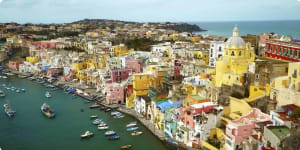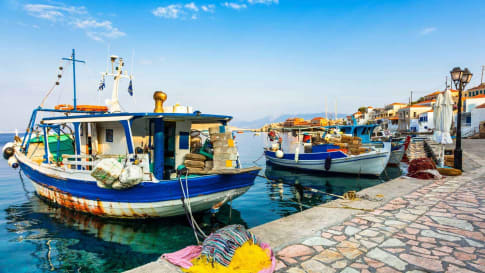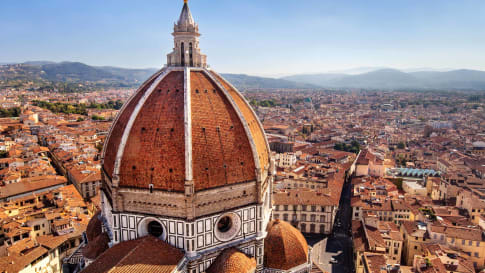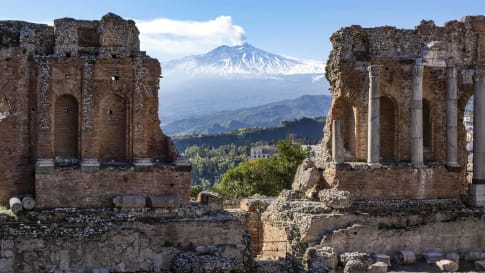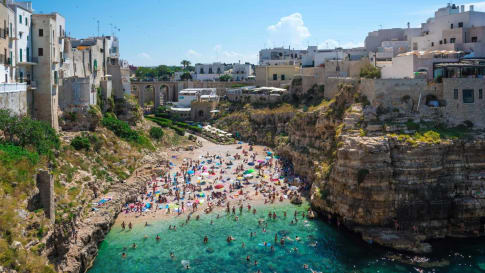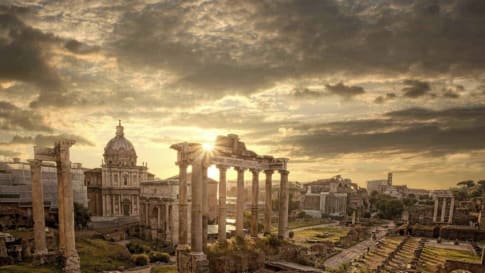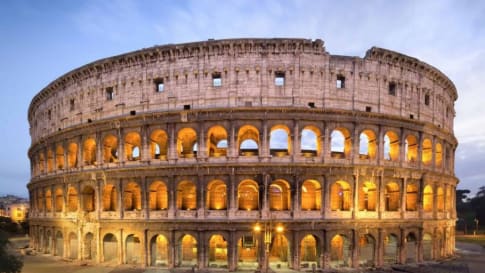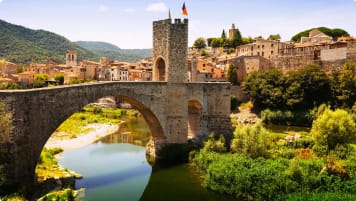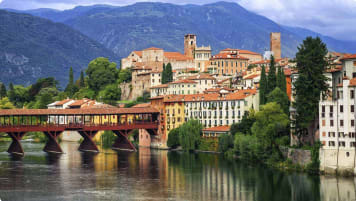Ancient History of Southern Italy & Sicily group tours
Our program for senior travellers, as well as featuring the rugged countryside of Southern Italy, also encompasses learning about the many civilisations that have shaped this land. We learn about the influence of the early Phoenicians, Greeks, Romans, Byzantines, Saracens, and Aragonese.
From A$16,995AUD
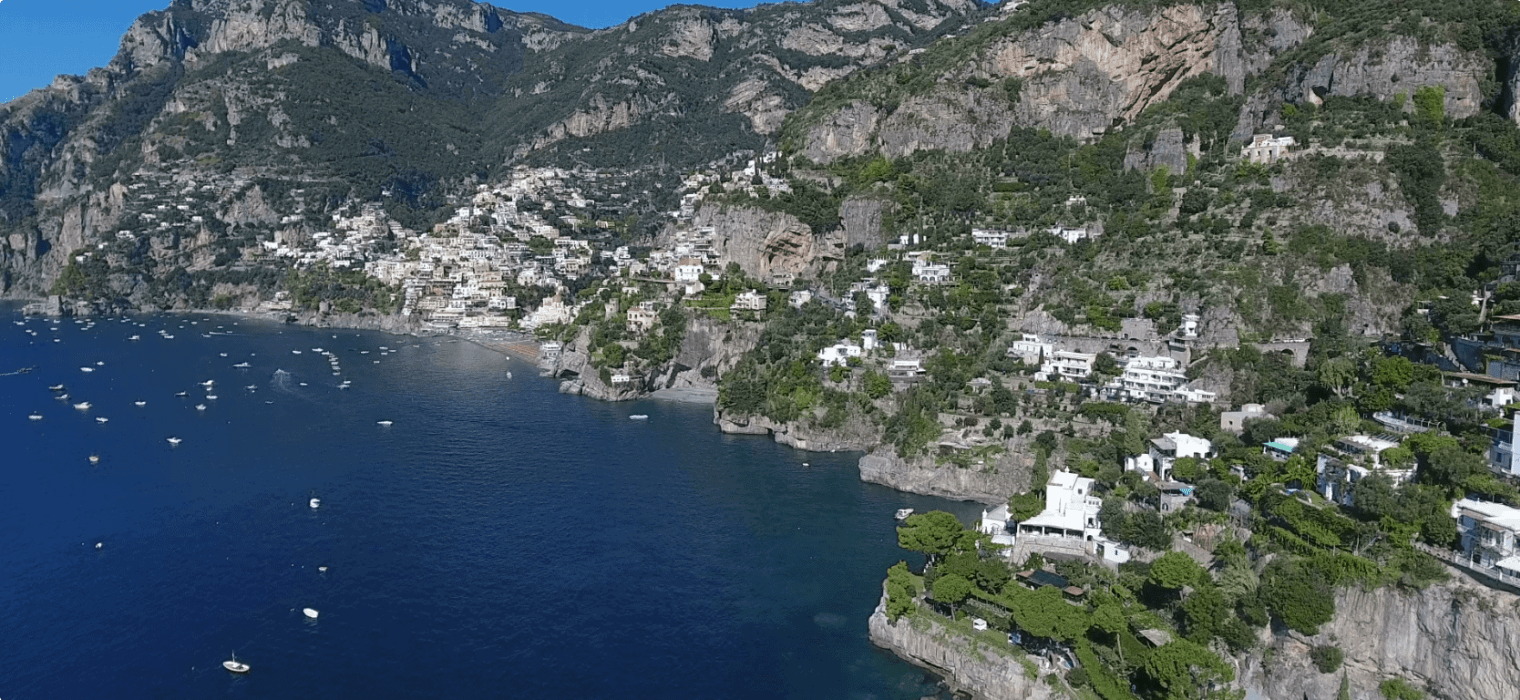
Highlights
- 1. Discover the culture and countryside of Sicily from the ancient citadel of Lipari on the Aeolian Islands to the superlative Greek remains.
- 2. Marvel at12th century mosaics in the cathedral of Monreale and the Norman Capella Palatina in Palermo, with its Byzantine artistry.
- 3. Calabria in the 'toe' of Italy with cliff-hugging Tropea and Byzantine Gerace.
- 4. Explore Apulia with its peculiar conical-roofed, stone trulli church and houses.

Departure Dates
| Departure Date | Price |
|---|---|
| 26 April 2025 Ends 17 May 2025 • 22 days A$17,845 Twin A$19,945 Single Available | Selected |
| 22 September 2025 Ends 13 October 2025 • 22 days A$17,845 Twin A$19,945 Single Available | |
| 24 January 2026 Ends 14 February 2026 • days A$17,485 Twin A$19,945 Single Available | |
| 25 April 2026 Ends 16 May 2026 • days A$17,485 Twin A$19,995 Single Available | |
| 21 September 2026 Ends 12 October 2026 • days A$17,485 Twin A$19,945 Single Available |
Ancient History of Southern Italy & Sicily: small group tour for seniors
Join Odyssey Traveller on this escorted small group tour for senior and mature travellers to the South of Italy, limited to 16 people this educational tour appeals to like minded couples and solo travellers. Enjoy as a senior traveller this Southern Italy tour as we traverse the lesser known islands and southern regions of the country. When you ask people about the must-see sights for tours of Italy, more often than not one of the first places they mention is the capital city, Rome, the submerged streets of Venice, or the sights of Florence, birthplace of the Renaissance. But there is more to Italy than its northern region. Head south from Rome and you'll find that the crowds begin to thin and life starts to move at a slower pace. Here you will see the cave dwellings of Matera; the ruins of Pompeii; Mount Vesuvius, the only active volcano in mainland Europe; and the gorgeous Amalfi Coast.
We go beyond the typical Southern Italy itinerary on our trip. During our educational tour, you will witness the dramatic, rugged countryside of the lower part of Italy's "boot" as we explore the ancient ruins, unique treasures, and diversity of Southern Italy. We learn about the influence of the early Phoenicians, Greeks, Romans, Byzantines, Saracens, Normans, Angevins and Aragonese while we search for evidence of their colonisation. We will also enjoy wine-tasting and a sampling of Southern Italian cuisine.
For the medieval traveller, religious houses provided a safe and convenient refuge. This tradition still exists in Italy and, as travellers, participants in this tour will sometimes stay in the modern-day version of these ancient religious houses.
Southern Italy Tour Itinerary
After arriving in Bari, we explore this picturesque port city, shaped by an almost continuous stream of invasion and conquest. The tour also includes Calabria, its brooding mountainous terrain stretching southwards between the Ionian and Tyrrhenian Seas; Sicily, the Mediterranean’s largest island, home to a multi-ethnic culture reflecting successive waves of colonisation; and the Aeolian Islands, steeped in antiquity and scattered like a string of pearls in the Tyrrhenian Sea.
Over the course of the tour we pass through several lesser-known Italian regions:
Apulia:
The heel of Italy's boot, the region of Apulia (Italian: Puglia) is slowly taking its place among Italy's major destinations, offering a combination of historic towns, beautiful scenery, and a slower pace of life than Northern Italy. Apulia was a major thoroughfare between the ancient Greek and Roman worlds and has been subjected to constant colonisation and invasion. This heritage has resulted in a rich mixture of historic architectural styles. Our tour begins in Bari, the capital of Apulia, an economic centre and university town with a striking historic centre. We then base ourselves in Alberobello, UNESCO World Heritage Listed for the famous fairy-tale like trulli, whitewashed stone houses with conical limestone roofs. Though some trulli have now become shops and accommodation for tourists, many Apulians continue to live in them today. Our tour also visits Lecce, known as 'the Florence of the South', due to the abundance of Baroque architecture in its historic centre; Martina Franca, a picturesque town home to stunning Baroque and Rococo architecture; and the white-painted hilltop town of Ostuni, with history dating back to the Stone Age.
Basilicata:
Also known by the ancient name Lucania, this small and mountainous region is one of Italy's hidden gems. The city of Matera is one of the world's oldest continously inhabited cities, a place of stark and severe beauty, where people have lived in cave dwellings or sassi from antiquity. Long a place of poverty that was considered to be Italy's 'national shame', the sassi were forcefully closed by the Italian government in the 1950s; but have been revitalised since the 1980s, as the caves have opened up to tourists. Matera has since been awarded UNESCO World Heritage Status and was the 2019 European City of Culture. Our tour also visits the town of Metaponto, home to an extensive archaeological site marking the Greek city of Metapontum. Once a thriving city, Metapontum was home to tens of thousands of people, including Pythagoras, who discovered his famous theorem in exile here in the sixth century BC.
Calabria:
If Apulia is Italy's heel, Calabria is the toes: a rugged peninsula with an over 800 kilometre (500 mile) stretch of Ionian and Tyrrhenian coastline. Colonised by the Greeks in the in the 8th century BC, who formed a city at what is today Reggio Calabria, the province has seen successive waves of conquest: Roman, Byzantine, Norman, Swabian, Aragonese and Bourbon. But the dominant influence is still Greek, as Greek words remain in the dialect, and ancient ruins dot the landscape. Our tour takes you to Stilo, one of Italy's most charming small towns and the home of the first Byzantine structure in Calabria; Gerace, with a stunning Norman cathedral and perfectly preserved medieval centre; and Tropea, a pretty seaside town.
Sicily:
The autonomous island of Sicily is a world apart. Much like the rest of Southern Italy, it was shaped by successive waves of colonisation: Greek, Roman, Byzantine, Arab, Norman, German and Spanish Bourbon. The power of the 'Magna Graecia' (Greater Greece) is still manifest in the ruins of Agrigento's 'Valley of the Temples', while Palermo, Sicily's bustling capital, is home to magnificent architecture fusing Norman, Arabic, and Byzantine elements. Our tour also takes you to Syracuse (Siracusa), where Greek dramas are still performed in an ancient theatre, and Taormina, with Greek ruins overlooking Mt. Etna. We also get away from it all on a day tour from Messina to the Aeolian Islands, a beautiful archipelago in the midst of the Tyrrhenian Sea.
Campania:
Home to Naples, southern Italy's biggest city (and Italy's third biggest), Campania is a land of constrasts, from bustling Naples to the exclusive results of the Amalfi Coast. Much like the rest of Southern Italy, Campania was first inhabited by the Ancient Greeks, and then became an exclusive resort for the rich and famous of Ancient Rome. Naples grew and prospered in the early modern period - in 1600, with a population of 300, 000, it was Europe's biggest city. Today, Naples is a treasure trove of history, art, and architecture, from Pompeiian frescoes to Caravaggio masterpieces to the Baroque grandeur of the Centro Storico. The ancient and haunting ruins of Pompeii more than live up to the hype. And Campania is home to some of Italy's best and most iconic beaches, from the world-famous Amalfi Coast, to the hidden gems of the Sorrento peninsula and the off-shore islands of exclusive Capri and down-to-earth Ischia. While our trip concludes with a day tour of Naples, we encourage you to stay on and uncover the many delights of Campania.
You can learn more about Italy with our country profile which also lists all other tour departures. For more details, click the ‘Top 5’ or ‘Itinerary’ buttons above! If you’re keen to experience this tour, please call or send an email. Or, to book, simply fill in the form on the right hand side of this page.
Articles about Southern Italy published by Odyssey Traveller:
- Southern Italy: History and Must-See Sights
- Mediterranean Islands: Malta, Sicily, Sardinia and Corsica
- About Malta, Sicily, Sardinia, and Corsica
- The Sicilian people and their kings
- Piecing together the life of Caravaggio
- Learning About Caravaggio’s Paintings
For all the articles Odyssey Traveller has published for mature aged and senior travellers, click through on this link.
External articles to assist you on your visit to Southern Italy:
Gallery
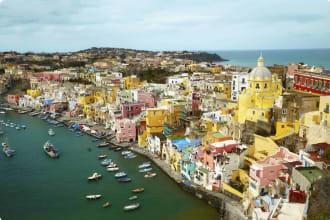
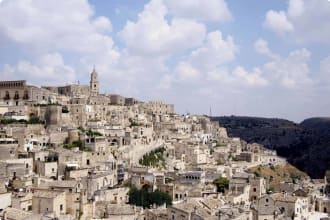
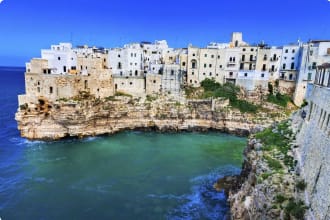
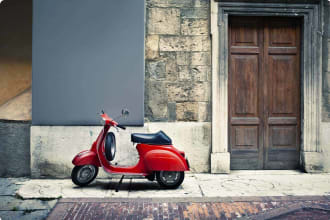
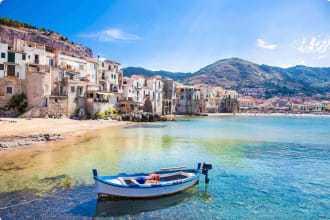
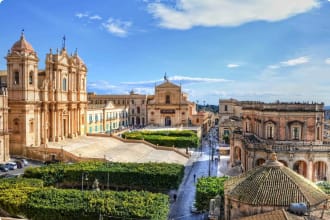
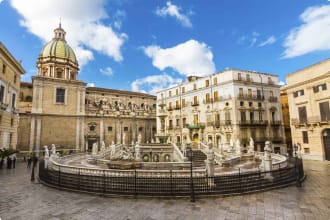
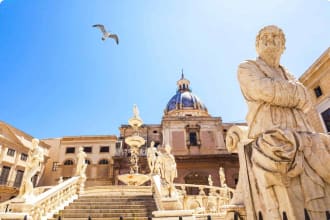
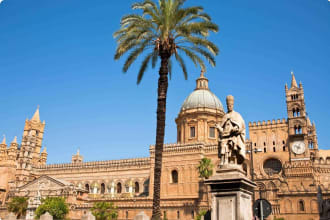
Itinerary
22 days
Day 1: Bari
Accommodation: Hotel Adria or similar.
On arrival in Bari, you will make your own way to the hotel. Having had time to unpack and settle in, you will get the chance to meet the tour leader and the rest of the group during an introductory meeting, followed by dinner at the hotel.
Day 2: Alberobello, Apulia
Accommodation: 5 nights at Hotel Lanzilotta or similar.
In the morning we enjoy a guided tour of Bari. Bari is a port city on the Adriatic Sea, and the capital of southern Italy’s Puglia (Apulia) region. Its maze-like old town, Bari Vecchia, is on a headland next to the port. Urban Bari offers a lively atmosphere full of culture and tradition; Trattorias line the streets, and the Basilica di San Nicola is said to house the bones of St Nicholas.
In the afternoon we travel southwards to Alberobello, which will be our base for the next five days. Located in the heel of Italy’s boot, the strategic significance of the region over several millennia has left behind a rich and varied history. It was a major thoroughfare between the ancient Greek and Roman worlds and has been subjected to constant colonisation and invasion since, which has resulted in a remarkable range of architectural styles and ruins. The region has a distinct feel from the Northern Italian hot-spots that many tourists are accustomed to, and was only integrated into what we recognise as modern Italy towards the end of the 19th century.
We will conclude our day with dinner at a local restaurant.
Day 3: Alberobello – Locorotondo – Martina Franca - Alberobello
Accommodation: Hotel Lanzilotta or similar.
Our destination today is Matera, located approximately one and a half hours from Alberobello. Matera is a striking and atmospheric town located in the remote southern region of Basilicata (also called Lucania). It’s famous for its extensive cave-dwelling districts, the sassi. The old town is a UNESCO heritage site, and we will have a guided tour to really make the most of its fascinating past. We visit the Chiesa San Pietro Barisano, Matera’s largest rupestrian church dating back to the 12th century. We learn about the district and its history at the Casa Noha Museum, and visit the distinctive Aragonese-style Castello Tramontano.
Later in the day we will explore the Palombaro Lungo, the underground cistern, and the Museo Nazionale a’Arte Medievale e Moderna della Basilicata. We will then drive back to the hotel, where we will have a group dinner.
Day 4: Alberobello – Matera – Alberobello
Accommodation: Hotel Lanzilotta or similar.
Today we will meet our local guide for a full day tour of the area including a visit to the towns of Locorotondo and Martina Franca. Locorotondo is known as one of the most beautiful villages of Italy, with its whitewashed cone-roofed trulli houses as well as its wines, the historic centre is on a hill with lovely views over the Valle d’ Intria. Martina Franca is another picturesque town with winding alleys, whitewashed houses in its old quarter but also features lovely baroque and rococo buildings and airy piazzas. Here, we view the Basilica of San Martino and visit Acropoli di Puglia – a traditional olive store.
Day 5: Alberobello – Lecce - Alberobello
Accommodation: Hotel Lanzilotta or similar.
After breakfast we travel to Lecce, also known as “The Florence of the South” due to the rich baroque architecture of the city. We enjoy a guided tour of the main sights, including the Roman Ampitheatre and Basilica di Santa Croce, followed by some free time to explore before returning to Alberobello.
Day 6: Alberobello – Ostuni - Alberobello
Accommodation: Hotel Lanzilotta or similar.
Ostuni, another small hilltop town is perhaps one of the most well-known in the region. The area has been inhabited since the Stone age, destroyed during the Punic Wars, and later rebuilt by the Greeks, who named it Ostuni, from the Greek Astu neon (“new town”). We have plenty of time to explore the town before returning to our hotel.
Day 7: Alberobello – Metaponto
Accommodation: Borgo Ritrovato or similar.
Today we depart Apulia region and travel southwest to the town of Metaponto, in the Basilicata region. The town is located by the Ionioan Coast and is composed of the main village and Metaponto Lido, the beach area. Between them lie the ruins of Metapontum, an ancient Greek Achaen colony.
Day 8: Metaponto – Cosenza - Briatico
Accommodation: 2 nights at Popilia Resort or similar.
En route to Briatico we pause at Cosenza, where we visit Sila National Park on a guided tour. Calabria, the “toe” of Italy, was occupied by the Greeks. Ever since those living in this part of Italy supported the cause against the Romans, the region has been dominated by foreign powers: Romans, Saracens, Normans, Swabians, Aragonese and Spanish. This has given rise to a proud and independent culture reflected in the magnificence of the environment. From this rugged and dramatic land of rural villages and mountainous terrain, many Italian emigrants brought to the Antipodes their traditional culture that has helped shape the persona of their new home.
Day 9: Briatico – Stilo – Gerace – Briatico
Accommodation: Popilia Resort or similar.
In the morning we transfer to Stilo, a small town that has been named one of the most beautiful hamlets of Italy. The local economy is based on the agriculture, mainly the production of wine, cheese, olive oil and cereals. Here, we visit the main sights and then continue to Gerace, a town that stands on a hill formed of clusters of 60-million-year-old sea fossils. The main attractions of Gerace are the remains of the old Norman Castle and the perfectly preserved medieval town. Later, we return to Briatico.
Day 10: Briatico – Troea – Reggio Calabria – Messina - Milazzo
Accommodation: Eolian Milazzo Hotel or similar.
After breakfast we depart Calabria and head to Sicily. On the way we stop at Tropea, a lovely seaside town. The most famous view of Tropea is the large rock outcrop jutting into the sea opposite the centre of town. We continue to Reggio Calabria where we visit the Museo Nazionale Della Magna Grecia. Later we make our way to the port to board our ferry to Messina, Sicily.
The Mediterranean’s largest island suffered, like Calabria, from its strategic position near “the middle of the world”. Its history recounts stories of constant invasion and colonisation and its cultural heritage has been shaped by the many different peoples who have occupied it over centuries. Its natural features range from the lofty, smouldering Mount Etna to the tiny volcanic Aeolian Islands where we discover many examples of former civilizations: from Phoenician and Carthaginian cities to Greek temples, Roman relics, Byzantine mosaics, Saracen domes and Norman castles and churches.
We stay in Milazzo tonight.
Day 11: Milazzo – Aeolian Island - Acireale
Accommodation: 4 nights at Santa Caterina Hotel or similar.
We start our day by travelling by ferry to the Aeolian Islands: seven small inhabited islands off the northern shore of Sicily. The archipelago was formed by volcanic activity and two of the islands still have active volcanoes. We visit the Vulcano Porto, as well as the city of Lipari, before transferring to Acireale.
Day 12: Acireale - Catania - Acireale
Accommodation: Santa Caterina Hotel or similar.
Today we explore Siracusa, located approximately one-hour drive south of Acireale. Siracusa is a large town including island and mainland districts. Many of its attractions are archaeological and historical. It was home to Archimedes and its Greek theatre still stands, with classic dramas performed there each year. We visit the main sights with our local guide and also explore the island of Ortygia, the historical heart of Siracusa.
Day 13: Acireale - Catania - Acireale
Accommodation: Santa Caterina Hotel or similar.
Our local guide will spend the day with us visiting the Etna area and Taormina, with its famous Greek theatre high above the sea and facing Etna.
Day 14: Acireale – Etna area – Taormina - Acireale
Accommodation: Santa Caterina Hotel or similar.
After breakfast we enjoy a city tour of Catania, the birthplace of composer Vincenzo Bellini. The town is situated between the Ionian Sea and Mount Etna. Here we visit the ruins from the ancient city and see the wealth of fine baroque architecture. There will be some free time to discover the city at your leisure before we return to our hotel in Acireale.
Day 15: Acireale – Caltagirone - Agrigento
Accommodation: 2 nights at Hotel Agrigento or similar.
Today we depart for Agrigento via Caltagirone, where we visit the town’s main sights including the Roman Villa of Piazza Amerina. We also visit the Museo Regionale della Ceramica, before continuing on our way.
Day 16: Agrigento
Accommodation: Hotel Agrigento or similar.
In the morning we visit the UNESCO World Heritage site of Valle dei Templi (Valley of the Temples), one of the greatest legacies of ancient Greece. The ruins are what remains of the ancient Greek city of Akragas. The town’s archaeological museum is also on our list of places to explore today; it holds a wide range of exhibits from the area. The afternoon is free for your leisure.
Day 17: Agrigento – Selinunte – Erice - Palermo
Accommodation: 3 nights at Hotel ibis Styles Palermo or similar.
Today we depart for Palermo. En route, we stop for a guided tour of Selinunte, home of one of Sicily’s great Greek archaeological sites. The archaeological park encompasses temples, ancient town walls, ruins of residential and commercial buildings as well as zones not yet excavated. As it’s set next to the sea in the south-western corner of Sicily, it also offers stunning views. We continue on to Erice for a short visit before arriving at Palermo: our base for the next four nights.
Day 18: Palermo – Cefalu - Palermo
Accommodation: Hotel ibis Styles Palermo or similar.
Our travels take us to Cefalu today; a charming historic seaside town where we take a guided tour. The remainder of the day is free to enjoy at your leisure here, and then back in Palermo.
Day 19: Palermo – Segesta – Alcamo - Palermo
Accommodation: Hotel ibis Styles Palermo or similar.
Today we travel west to the town of Segesta, originally founded by the Elyman people – one of the three indigenous peoples of Sicily – and later integrated with the Greeks. The archaeological complex is set up high in the mountains, where we visit the Doric Temples and Hellenic Theatre. Later we drive back via Alcamo where we have the opportunity to visit a local wine producer and sample their drop.
Day 20: Palermo – Monreale - Naples
Accommodation: Overnight cabin on the ferry.
On our last day in Sicily we explore Palermo on a full day tour of Sicily’s cultural, economic and touristic capital. We also take a short trip to Monreale, a town just outside Palermo and famous for its mosaic-adorned Norman cathedral. Later, we transfer to the port for our overnight ferry to Naples.
Day 21: Naples
Accommodation: Naples Hotel or similar.
On arrival, we are picked up at the port and taken out for breakfast in a local café. This is followed by a half-day tour of Naples. The afternoon is free to relax and, in the evening, we gather for the last time as a group for our farewell dinner.
Day 22: Naples
Our tour concludes today after breakfast at the hotel.
Includes / Excludes
What’s included in our Tour
- 20 nights hotel accommodation
- 1 night on board overnight ferry from Palermo to Naples (Single cabins may not be available)
- 20 Typical local breakfasts at hotels.
- 13 dinners at the hotel or local restaurants.
- Touring by comfortable and modern coach.
- Transport, lectures and field trips as indicated.
- Applicable entry fees and services of local guides.
- Services of a Tour Leader.
- Service Charges and Gratuities.
- Detailed Tour Information Booklet.
What’s not included in our Tour
- International airfares and taxes
- Airport transfers
- Meals not included in the itinerary
- Comprehensive travel insurance
- Items of personal nature like laundry, phone calls, etc
Participants must be able to carry their own luggage, climb and descend stairs, be in good health, mobile and able to participate in 3-5 hours of physical activity per day, the equivalent of walking / hiking up to 8 kilometers per day on uneven ground.
Book now
Make it a private tour
Easing your journey
Crossing international borders with restrictions
The list of requirements to travel internationally has changed and will continue to change for several years. Odyssey is here to assist you in managing your way through these requirements:
For more information see our Crossing international borders with restrictions page.
Book With Confidence
If less than 30 days before your tour starts you are unable to travel as a result of Government travel restrictions, Odyssey Traveller will assist you with a date change, provide you with a credit or process a refund for your booking less any non-recoverable costs.
See Terms and conditions for details.
Peace of Mind Travel
The safety of our travellers, tour leader, local guide and support staff has always been our top priority and with the new guidelines for public health and safety for keeping safe for destinations around the world, we’ve developed our plan to give you peace of mind when travelling with us.
See Peace of Mind Travel for details.
Reading List Download PDF
The Italians
John Hooper
Sublime and maddening, fascinating yet baffling, Italy is a country of endless paradox and seemingly unanswerable riddles.
John Hooper's marvellously entertaining and perceptive new book is the ideal companion for anyone seeking to understand contemporary Italy and the unique character of the Italians. Looking at the facts that lie behind - and often belie - the stereotypes, his revealing book sheds new light on many aspects of Italian life: football and Freemasonry, sex, symbolism and the reason why Italian has twelve words for a coat hanger, yet none for a hangover.
The Pursuit of Italy: A History of a Land, its Regions and their Peoples
David Gilmour
Visiting a villa built by Lorenzo de Medici outside Pisa, David Gilmour fell into conversation about the unification of Italy with a distinguished former minister: '"You know, Davide," he said in a low conspiratorial voice, as if uttering a heresy, "Garibaldi did Italy a great disservice. If he had not invaded Sicily and Naples, we in the north would have the richest and most civilized state in Europe." After looking cautiously round the room he added in an even lower voice, "Of course to the south we would have a neighbour like Egypt."'
Was the elderly Italian right? Was the unification of Italy a mistake? The Pursuit of Italy traces the whole history of the Italian peninsula in a wonderfully readable style, full of well-chosen stories and observations from personal experience, and peopled by many of the great figures of the Italian past, from Cicero and Virgil to Dante and the Medici, from Cavour and Verdi to the controversial political figures of the twentieth century. The book gives a clear-eyed view of the Risorgimento, the pivotal event in modern Italian history, debunking the influential myths which have grown up around it.
Gilmour shows that the glory of Italy has always lain in its regions, with their distinctive art, civic cultures, identities and cuisine. The regions produced the medieval communes and the Renaissance, the Venetian Republic and the Grand Duchy of Tuscany, two of the most civilized states of European history. Their inhabitants identified themselves not as Italians, but as Tuscans and Venetians, Sicilians and Lombards, Neapolitans and Genoese. This is where the strength and culture of Italy still comes from, rather than from misconceived and mishandled concepts of nationalism and unity.
This wise and enormously engaging book explains the course of Italian history in a manner and with a coherence which no one with an interest in the country could fail to enjoy.
The Popes: A History
John Julius Norwich
John Julius Norwich examines the oldest continuing institution in the world, tracing the papal line down the centuries from St Peter (traditionally - but by no means historically - the first Pope) to the present. Of the 280-odd holders of the supreme office, some have unquestionably been saints; others have wallowed in unspeakable iniquity.
One was said to have been a woman, her sex being revealed only when she improvidently gave birth to a baby during a papal procession. Almost as shocking was Formosus whose murdered corpse was exhumed, clothed in pontifical vestments, propped up on a throne and subjected to trial.
From the glories of Byzantium to the decay of Rome, from the Albigensian Heresy to controversy within the Church today, The Popes is superbly written, witty and revealing.
The Land Where Lemons Grow: The Story of Italy and its Citrus Fruit
Helena Attlee
Travellers have always been thrilled by the sight of citrus in Italy, where dark leaves and bright fruit seem to charge the landscape, making the trees symbols of a sun-soaked, poetic vision of the country. Citrus also holds a special place in the Italian imagination, and in The Land Where Lemons Grow, Helena Attlee sets out to explore its curious past and its enduring resonance in Italian culture. The Land Where Lemons Grow is a heady mixture of travel writing, history, horticulture and art; a unique journey through Italy's cultural, culinary and political past. Helena Attlee is the author of four books about Italian gardens, and others on the cultural history of gardens around the world. Helena is a Fellow of the Royal Literary Fund and has worked in Italy for nearly 30 years.
Sicily: A Short History, from the Greeks to Cosa Nostra
John Julius Norwich
Sicily is the key to everything' Johann Wolfgang von Goethe
The author of the classic book on Venice turns his sights to Sicily in this beautiful book full of maps and colour photographs.
'I discovered Sicily almost by mistake . . .We drove as far as Naples, then put the car on the night ferry to Palermo. There was a degree of excitement in the early hours when we passed Stromboli, emitting a rich glow every half-minute or so like an ogre puffing on an immense cigar; and a few hours later, in the early morning sunshine, we sailed into the Conca d'Oro, the Golden Shell, in which the city lies. Apart from the beauty of the setting, I remember being instantly struck by a change in atmosphere. The Strait of Messina is only a couple of miles across and the island is politically part of Italy; yet somehow one feels that one has entered a different world . . . This book is, among other things, an attempt to analyse why this should be.'
The stepping stone between Europe and Africa, the gateway between the East and the West, at once a stronghold, clearing-house and observation post, Sicily has been invaded and fought over by Phoenicians and Greeks, Carthaginians and Romans, Goths and Byzantines, Arabs and Normans, Germans, Spaniards and the French for thousands of years. It has belonged to them all - and yet has properly been part of none.
John Julius Norwich was inspired to become a writer by his first visit in 1961 and this book is the result of a fascination that has lasted over half a century. In tracing its dark story, he attempts to explain the enigma that lies at the heart of the Mediterranean's largest island.
This vivid short history covers everything from erupting volcanoes to the assassination of Byzantine emperors, from Nelson's affair with Emma Hamilton to Garibaldi and the rise of the Mafia. Taking in the key buildings and towns, and packed with fascinating stories and unforgettable characters, Sicily is the book he was born to write.
Midnight in Sicily
Robb Peter
A journey into the heart of Sicily, using art, food, history and literature to shed light on southern Italy's legacy of political corruption and violent crime. The book takes as its starting point the ongoing trial of seven-times Prime Minister Giulio Andreotti.
